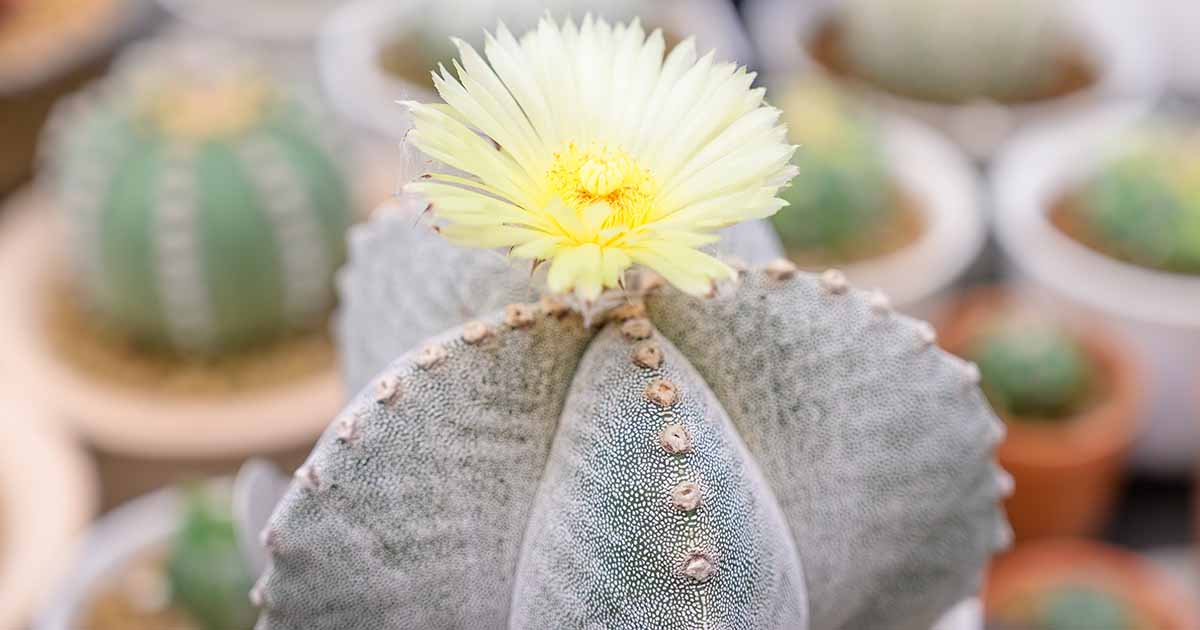Fertilizing
A little fertilizer will help your bishop’s cap cactus maintain healthy growth, but be careful not to overdo it.
Astrophytum cacti only need to be fertilized once a month during the growing season.
Choose a very gentle gentle product, such as Dr. Earth’s Succulence Cactus and Succulent Plant Food.


Dr. Earth Succulence
With an NPK ratio of 1-1-2, this fertilizer is mild and formulated specifically for cacti and succulents. It’s available in 16-ounce bottles from Arbico Organics.
Cultivars to Select
There are some fabulous cultivated varieties of A. myriostigma, but the straight species is also beautiful in its own right.
Let’s take a look at a few standout cultivars:
Fukuryu
‘Fukuryu’ is a cultivar of A. myriostigma known for its funky looking, randomly occurring creases and lines.


There are different forms of this cultivar – some have flocking that appears in stripes, some are almost ball shaped, and others are known for being fleck-free.
Kikko
‘Kikko’ is another cultivar of A. myriostigma that has many different forms.


The defining characteristic of this cultivar are the horizontal furrows that crease the ribs, creating prominent tubercles.
Depending on the form, these tubercles can be rounded, crystal-like, or more washboard-like.
Onzuka
‘Onzuka’ is covered with a thick pattern of white flecks on the surface of the skin.


The pattern of the flecks varies, appearing sometimes like a sky full of snow or reptile scales. Or the flocking can be so thick it looks almost like the rind on a camembert cheese!
Propagation
A. myriostigma can be propagated in two different ways: sowing seeds and grafting.
We’ll describe both methods briefly, as well as providing directions for transplanting seedlings.
From Seed
While propagating cacti and succulents from seed is slow, requiring about a year from sowing to transplanting, it’s quite a fun project!


And one that’s best undertaken in late winter to early spring.
Choose or create a mix that contains 80 percent gritty mineral ingredients such as coarse sand, fine pumice, or lava rocks, and 20 percent organic matter such as coconut coir, compost, or pine fines.
- First, blend the ingredients to make the seed starting growing medium.
- Fill pots or trays with growing medium to within an inch of the rims, then moisten it with water.
- On top of the growing medium, spread a thin layer of horticultural sand, roughly one third of an inch thick.
- Spread the seeds at least half an inch apart, then cover lightly with a sprinkling of sand then moisten the sand.
- Cover the pots with a plastic bag or cling wrap, or set them under a humidity dome. Keep the medium evenly moist.
- Maintain the temperatures at 80°F during the day and 70°F at night. If you don’t have a suitable location, you can always use a heat mat.
If the seeds are fresh, they will germinate quickly, within a few days. Give them a month, though, just to be safe.

